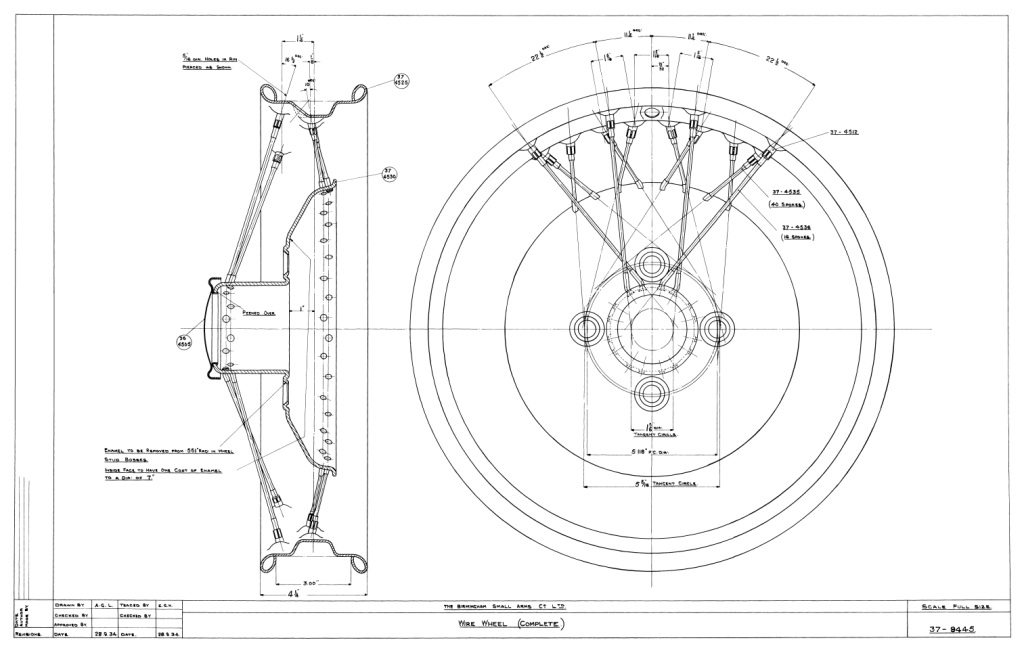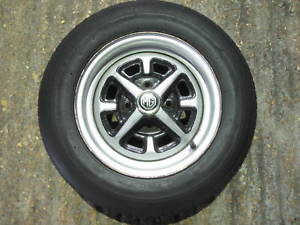|
Many other manfacturers made their own wheels or bought them in from pure wheel makers, below are some of them.
Avon safety wheel - https://en.wikipedia.org/wiki/Avon_Safety_Wheel although a brilliant safety idea they did not catch on as fitting the tyre was not as easy as a standard wheel, see further down for the Rubery Owen safety wheel which seemed to suffer from the same problem.
Above left shows the safety wheel and a standard wheel, on the right the procedure for fitting a tyre to the safety wheel.
The Daimler and Lanchester owners club which also supports rear-wheel-drive BSA cars (although they do not figure in the name of the club) - http://www.dloc.org.uk/
This type of detachable wheel was introduced it is thought around 1913 when fitted to a shooting brake built for the Docker family, this being just before WWI it is not thought to have come into general use until hostilities had ended and normal motor car production was reintroduced, they had a long service as they were still being fitted to cars around 1931/2 but more conventional wheel fixings seem to be used from then on using either a single octagonal nut or 4 studs. Lanchester were never fitted with these wheels as they were not incorporated into the BSA group until 1931.
Many Thanks to Peter Gallie, Mark Cuthbert-Brown and Andrew Alston (his website is here - http://www.andrewalston.co.uk/ ) for their help with this history and pictures.
Shown are similar BSA and Daimler spanners and wheels with slight variations in design.
Right - an original BSA wheel technical drawing 
Below, a selection of wheels seen for sale on ebay
Below, a rare large 7.5 x 23" wheel and tyre from a Daimler Low Chassis Double Six 50, picture kindly supplied by the owner Peter Gallie and shown with his permission, in use from 1930 to 1963, being such a large wheel the spanner was equally as large having a 5 1/4" ring internal daimeter (Peter is in need of one this size if anybody can help).
Below, wheel removal instructions from a Daimler 1919 6-30 instruction book seen on ebay, an easy to read instruction of the same From Andrew Alston's website http://www.andrewalston.co.uk/manual/p14.htm , followed by a page from the 1931 20/30 instruction manual (picture supplied by Mark Cuthbert-Brown).
Budd - see "Michelin"
Daimler - see BSA
Derwa -
Edmond
Derwa, born in 1871, took over from his father a wheelwright founded in 1790.
He soon specialized in the manufacture of wheels
with wooden spokes for which he received a gold
medal in 1905 in Liège, followed by a grand prize
in 1910 in Brussels. In 1914 the company supplied artillery wheels to
the entire Liège automobile industry.
Very well known in their time, this wheel fitted with a Daimler cap.
Dunlop - 4 stud disc wheels shown here fitted to a Riley 1920's chassis and adverts.
Houk -
Humber -
Lanchester - not sure who made this wheel though (maybe Rubery Owen)
Below - the covers and related pages from 1914 era Michelin (travel) guides to the British Isles, it is still possible to buy current worldwide versions.
Rubery Owen - Rubery Owen.com A British company still trading, not only did they make wheels but chassis and anything else it seems!
The red wheel pictured was from an Austin Twelve 1929 - 30, normally Austin used Sankey wheels but this wheel was used as it gave a more sporty look.
The Rostyle (Rubery Owen Style) wheel they made in the 1960/70's was a steel pressing shaped and painted to imitate "alloys"
https://en.wikipedia.org/wiki/Rostyle_wheel  |